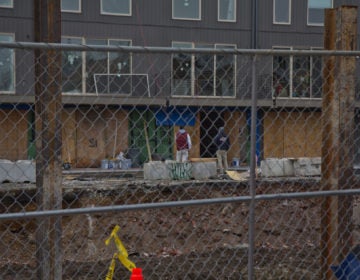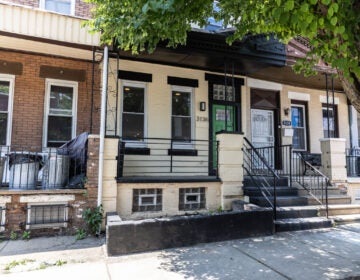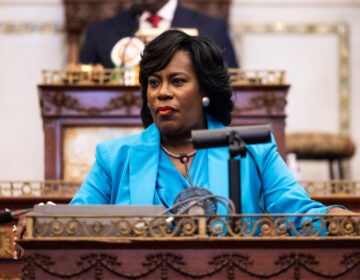Neighbors are winning concessions from developers — but not affordable housing
As Philadelphia sees a boom in multifamily construction, community groups are negotiating with developers. Affordable housing is an elusive target.
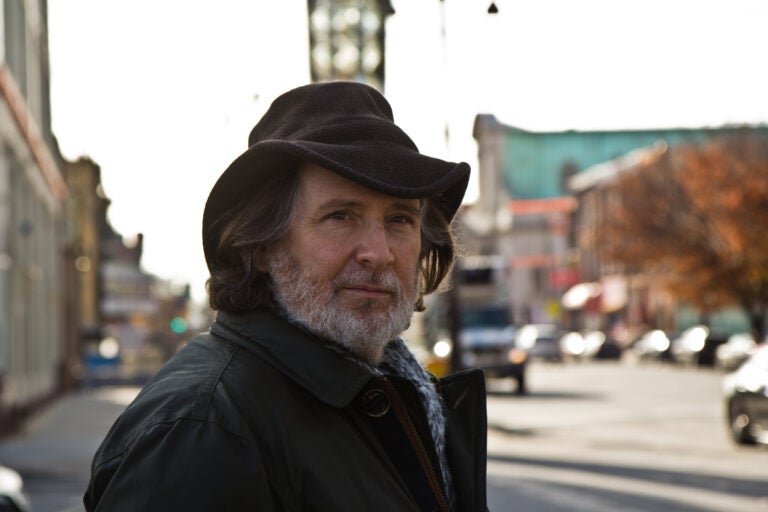
Lance Haver is the treasurer of the Hawthorne Empowerment Coalition. (Kimberly Paynter/WHYY)
Alice Adams-Mclin, 74, lived in the Hawthorne neighborhood of Philadelphia most of her life.
Over the decades, she and her large family lived in three houses, all on Carpenter Street.
As far as houses were concerned, they were affordable,” said Adams-Mclin, who still lives just a short walk from the block where spent her childhood. “Practically, they weren’t the best of houses, but we lived down there and the rent was dirt cheap.”
If Adams-Mclin’s parents were still alive, she said, they wouldn’t know what to do in the old neighborhood. The South 13th Street rowhouse she grew up in sold most recently for $625,000. Tall apartment buildings with floor-to-ceiling windows and shops, including a grocery store, on the ground floor are coming to the big empty lot across the street on the northeast corner of Broad Street and Washington Avenue.
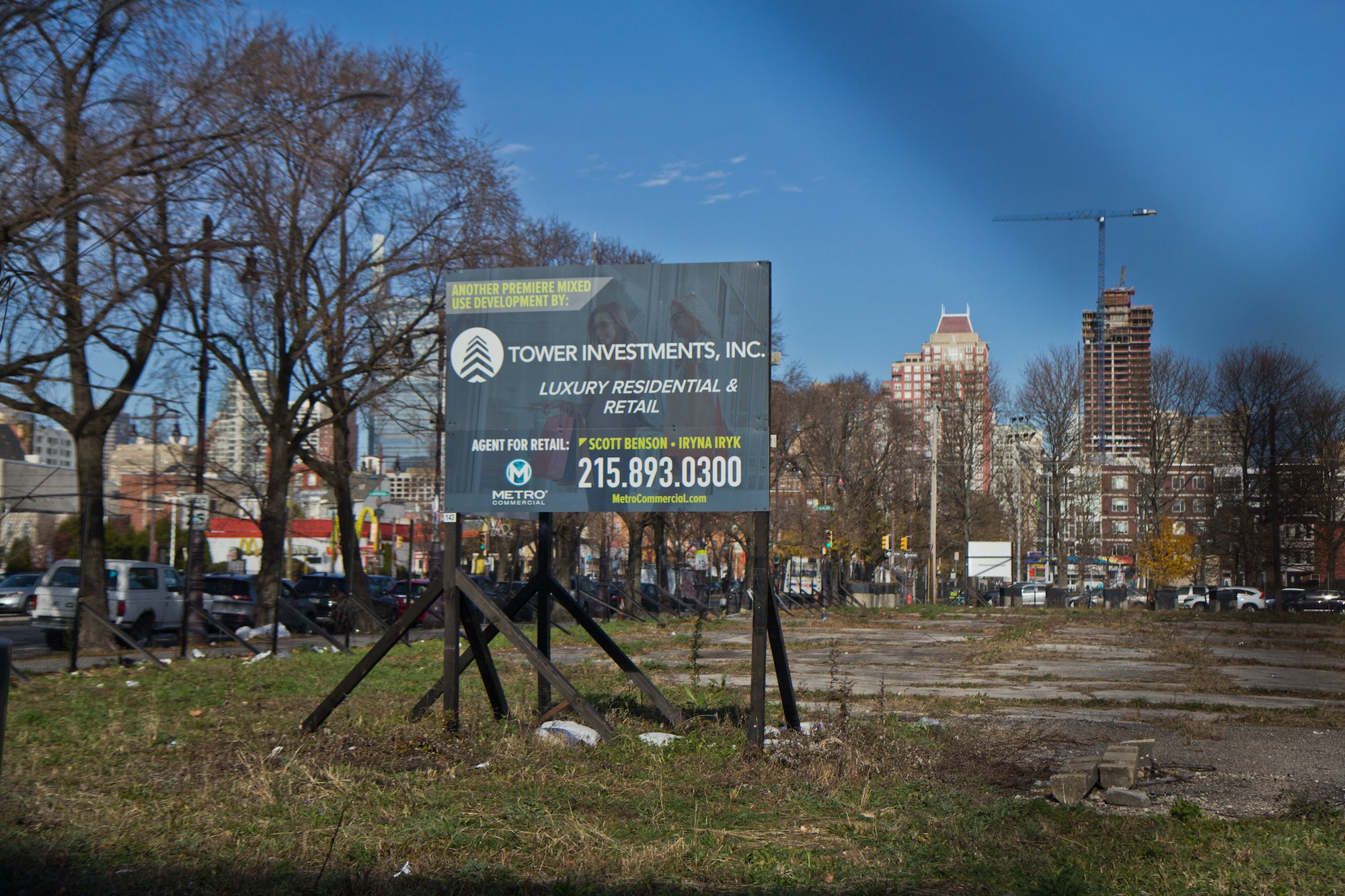
The registered neighborhood organization that represents Adams-Mclin’s community, Hawthorne Empowerment Coalition, opposed earlier plans for the site from developer Bart Blatstein. Those plans called for 34-story towers, a hotel, and shopping area three stories above the street. Among complaints about height, density and design, were concerns about the affordability of the housing.
Blatstein’s project has since been redesigned to be a mid-rise, only 11 stories with all of the retail on the street level. But the residential price point wasn’t something Blatstein would compromise on.
The project will include apartments at market-rate rents, said Blatstein. He said entry-level units would be “in the teens, under $2,000” and affordable for a first-year teacher, in his view.
“The rents won’t exceed a third of their income,” Blatstein said. A first-year public school teacher in the city makes $46,267.
Instead, Blatstein has promised other benefits. He has vowed to bring in local businesses and said he will set aside 25% of its retail to be operators based in Philadelphia. He has also promised to provide legal assistance to Hawthorne residents who want to dispute higher tax assessments.
“I think everybody is happy. The new plan is a result of community concerns,” Blatstein said.
Blatstein has also committed to use a program to recruit and train local residents in construction careers and participate in the project. The program is modeled after a deal struck in 2017 by Post Brothers, another Philadelphia developer, and the West Poplar neighborhood association, Richard Allen New Generation. Instead of signing a traditional community benefits agreement, Post Brothers agreed to hire 10% of the project’s workforce to come from the neighborhood. Blatstein said he committed to hiring 20% of his construction labor force within immediate zip codes.
The Broad and Washington project is one of several big mixed-use projects to be discussed Thursday at a meeting of the Civic Design Review board, an advisory panel charged with making design recommendations for large developments. The projects under review represent a combined 2,846 residential units — a number that exceeds the total approved building permits for multifamily housing in 2019.
The recent boom in large projects has created some openings for community leaders to negotiate with developers. With the hope of making such negotiations standard, Council President Darrell Clarke introduced a bill that aimed to mandate community benefits agreements for certain large projects. That bill never passed into law, but unofficial CBAs abound. Meanwhile, some developers have taken advantage of the city’s voluntary inclusionary housing zoning bonus and contributed to the city’s Housing Trust Fund or built their own units, providing a public benefit in exchange for the right to build bigger structures than would be allowed under zoning code.
But Blatstein isn’t in that camp. Nor is Post Brothers, which is also putting a large mixed-use project before the board on Thursday. Instead, both developers are working with community organizations independently to come to agreements that provide other benefits that don’t involve housing.
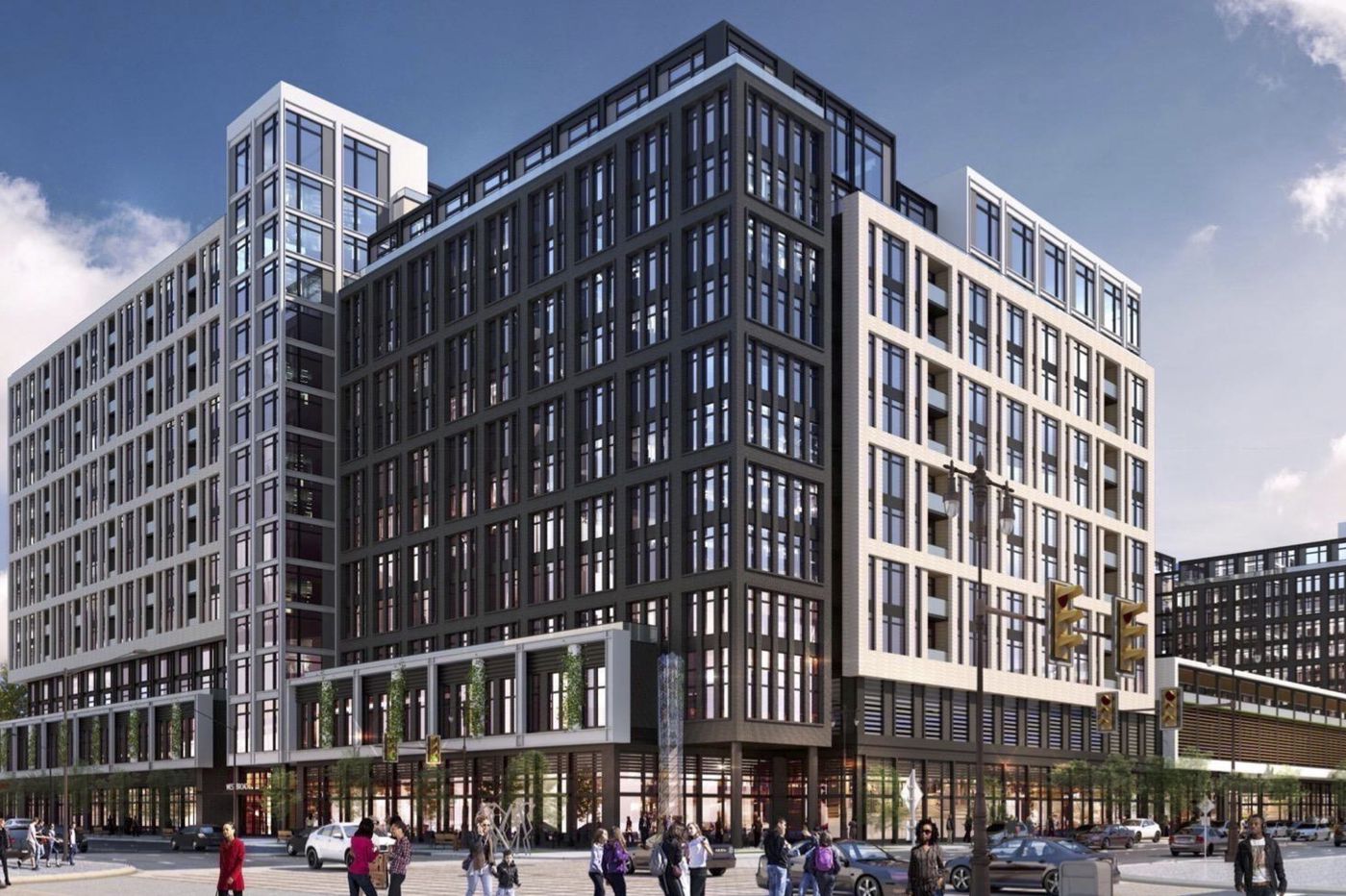
Like Blatstein, Post Brothers CEO Mike Pestronk is looking back at the local hiring program initiated with Richard Allen New Generation and thinking about reviving the strategy with his latest project, Piazza Terminal at 1075 Germantown Avenue in Northern Liberties. The project is a remake of the development formerly known as The Piazza, built by Blatstein in the early 2000s. Another glassy complex with more than 1,000 residential units and hundreds of thousands of square feet for retail and other commercial uses, Piazza Terminal won’t include any housing designated as affordable.
Pestronk said in an interview he is willing to work with West Girard Progress, a registered community organization in the area, to offer 100 jobs to people in the neighborhood.
“It’s more than what they were asking for but based on our experience, it’s achievable,” Pestronk said.
West Girard Progress President Barbara Chavous-Pennock said her registered community didn’t ask Post Brothers to include affordable units in Piazza Terminal. The job opportunities are what her group wants, she said.
“The community’s demand for equality in construction has fallen on death ears,” Chavous-Pennock said. “The Post Brothers stepped up. We believe that if individuals are afforded jobs and are gainfully employed, they are able to rent wherever they seek to rent.”
Chavous-Pennock said this is a way to get more minorities, particularly Black residents, to participate in construction trades. Historically, they have been underrepresented.
“With such an enormous number of willing workers, we are significantly under-represented,” she said.
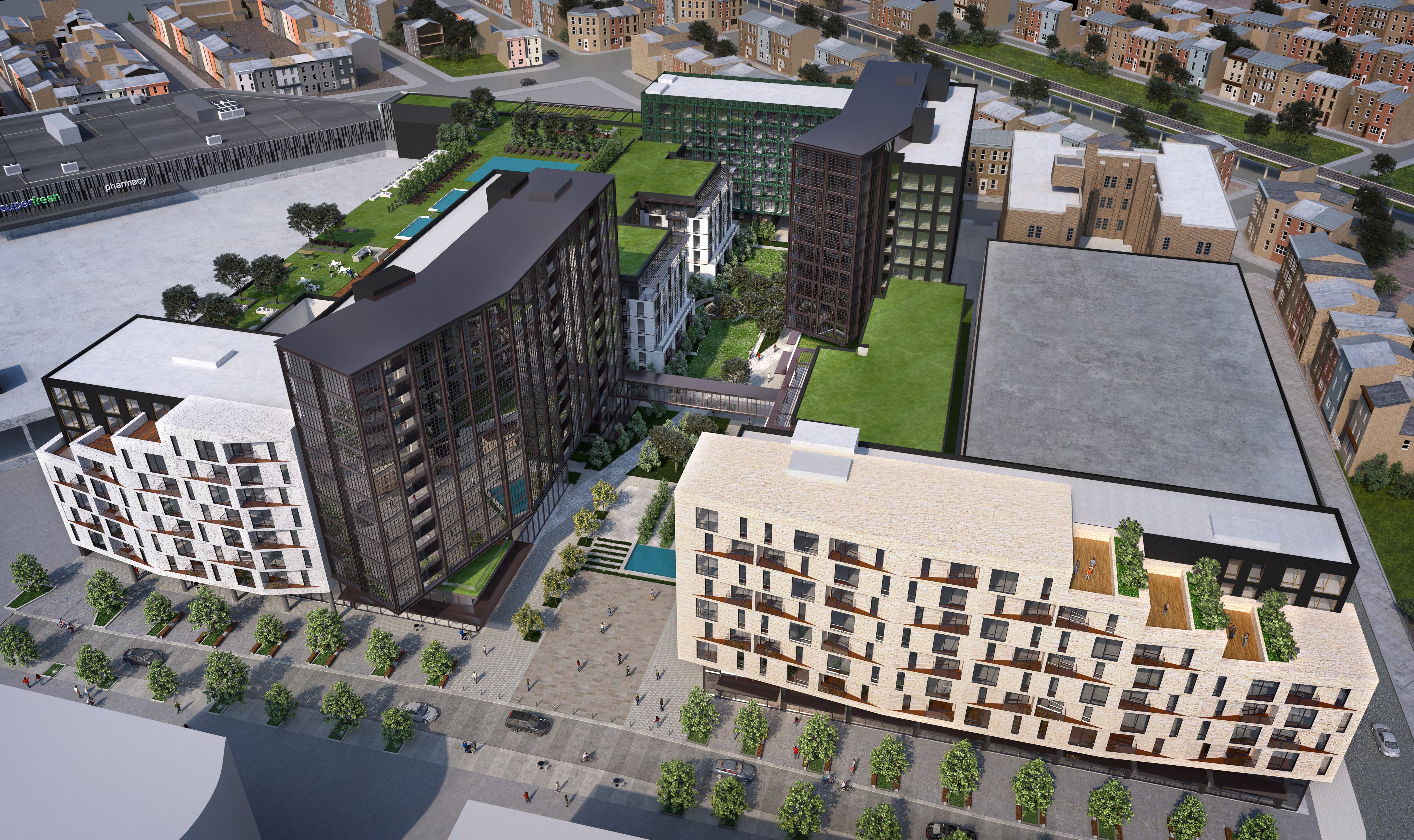
Yes in my backyard — with an ask
Helene J. Villaneuva, 57, lives a short walk from the Piazza. She was born and raised on the 1100 block of North Hancock, right there, and is one the many nearby residents excited that someone is interested in reviving the project.
“It affected me for the better,” she said. “When the Piazza opened, it was the greatest thing since sliced bread. I could actually walk across the street, sit someplace beautiful and have a cup of coffee and sit and watch people go by. Before that, there was nothing.”
The Northern Liberties Neighborhood Association as well as West Girard Progres are still working on negotiations with Post. One of NLNA’s requests was for the inclusion of affordable housing.
Claire Adler, the president of Northern Liberties Neighborhood group, said by and large, there is agreement that affordability is important but the disagreement was about how to achieve it. Ultimately, the zoning committee felt they weren’t going to get it for developments designed to rent or sell at market rate. Still, they ask because, according to Adler, it’s the right thing to do.
“We feel that it’s important to have a consistent voice to consistently ask,” Adler said.
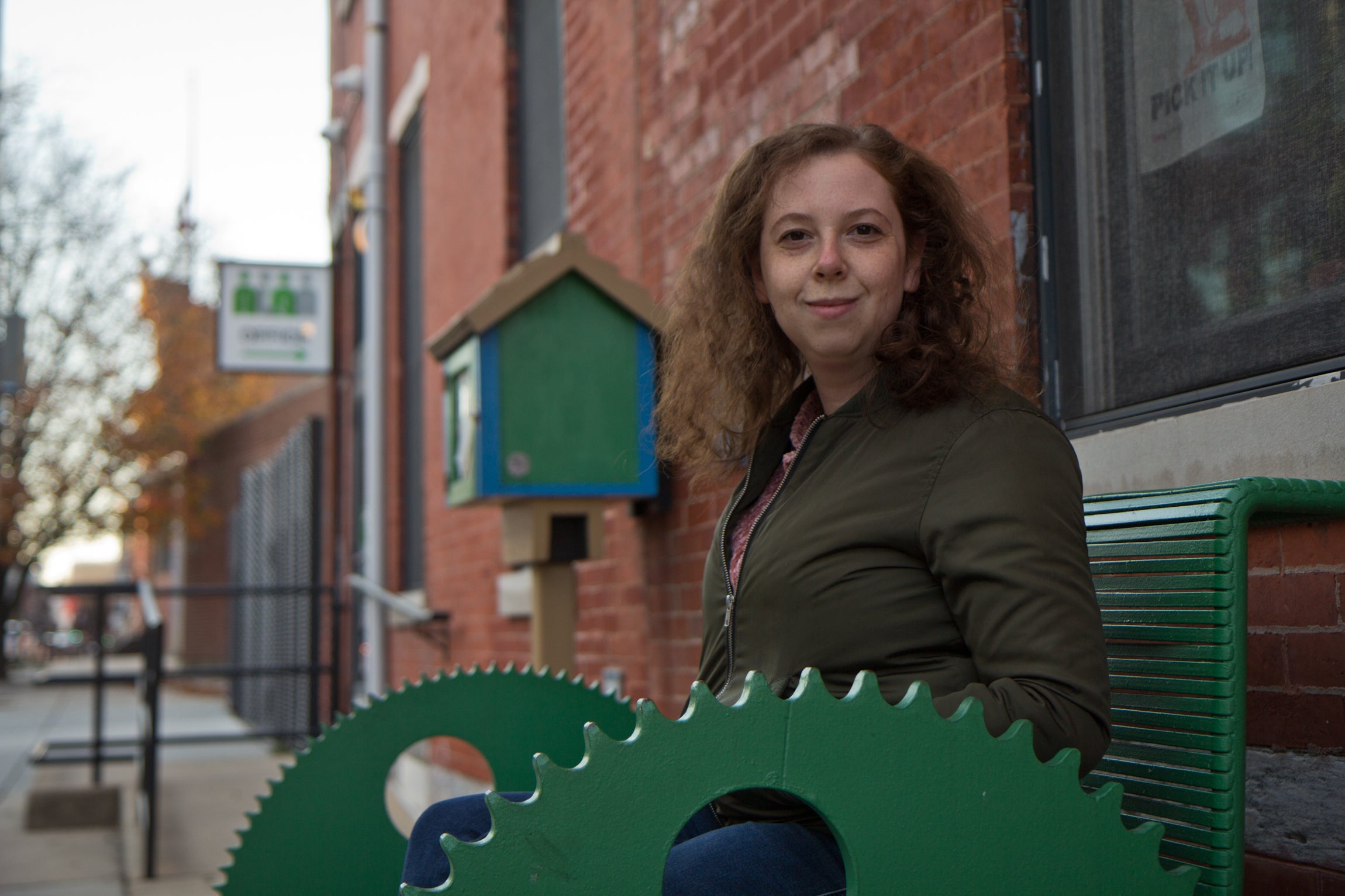
They have been successful with the request in the past which was for 342 W Girard Ave by SRB Properties for moderate affordable housing earlier this year. That situation is a bit different because the group was requesting a variance and Post is not. That project had not gone to the Zoning Board of Adjustment.
Pestronk said he has considered participating in one of the government programs that subsidize affordable units within developments. The math has never worked.
“For a project of this scale, we could have like 10 affordable units [but] the dollars available are just so small,” he said. “The other thing is just timing. To get through the approval process, it takes years and we need to get the project off the ground.”
In South Philadelphia, Lance Haver, the treasurer for the Hawthorne Empowerment Coalition, said the group supports Blatstein’s project despite the fact that it didn’t get the affordable units it wanted to see.
Haver said the other negotiations Blatstein agreed to represent a win. He’s happy the project will create jobs, opportunities for small businesses. The developer’s promise to help homeowners fight rising assessments means a lot of neighbors, he said.
“Our argument was very simple, why should the people who lived through the hard times, rebuilt this neighborhood to a place people wanted to move, fought for and won improvements and investments be forced out by their own success?”
A boom the pandemic didn’t stop
Earlier this year, when the economy began to pick up after pandemic shutdowns, thousands of new homes under development resumed operation.
A lot of this residential construction is credited to changes in the residential tax abatement. Beginning early next year, residential construction was slated to be reduced. As of last week, this reduction will be delayed another year.
Kevin Gillen, an economist and senior research fellow with the Lindy Institute for Urban Innovation at Drexel University, said it’s a great time to take advantage of the housing market in the city right now.
“If people are no longer working in offices and they’re working from home, then that basically increases housing values because your home is no longer just a residence,” Gillen said.
Gillen described Philadelphia as having it’s most significant building boom since World War II with most of the new development concentrated in multifamily developments like Piazza Terminal or the Broad and Washington project.
Even so, when compared to other cities like Dallas or Houston that are adding tens of thousands of new units this year, Philadelphia is considered to be lagging behind in comparison.
Both Post Brothers and Towers Investments made some minor adjustments to their plans to accommodate people’s needs during the pandemic. But overall, both said the pandemic hasn’t altered anything major. According to Blatstein, he adjusted his plans for shared and open space by about 30%. Pestronk said his minor changes were primarily for coworking spaces such as making systems touchless and putting in dividers on the big open tables.
Gillen said that developers in general who are still trying to make more condos and apartments are looking at 10 to 20 years in the future, not one or two.
“Presumably, they’re looking beyond the pandemic or when things get back to normal,” he said. “Prior to the pandemic, there was a bloom in building apartments in Philadelphia because people have no problem living in that higher density provided they had a great location and amenities.”
 WHYY is one of over 20 news organizations producing Broke in Philly, a collaborative reporting project on solutions to poverty and the city’s push towards economic justice. Follow us at @BrokeInPhilly.
WHYY is one of over 20 news organizations producing Broke in Philly, a collaborative reporting project on solutions to poverty and the city’s push towards economic justice. Follow us at @BrokeInPhilly.

Subscribe to PlanPhilly
WHYY is your source for fact-based, in-depth journalism and information. As a nonprofit organization, we rely on financial support from readers like you. Please give today.



